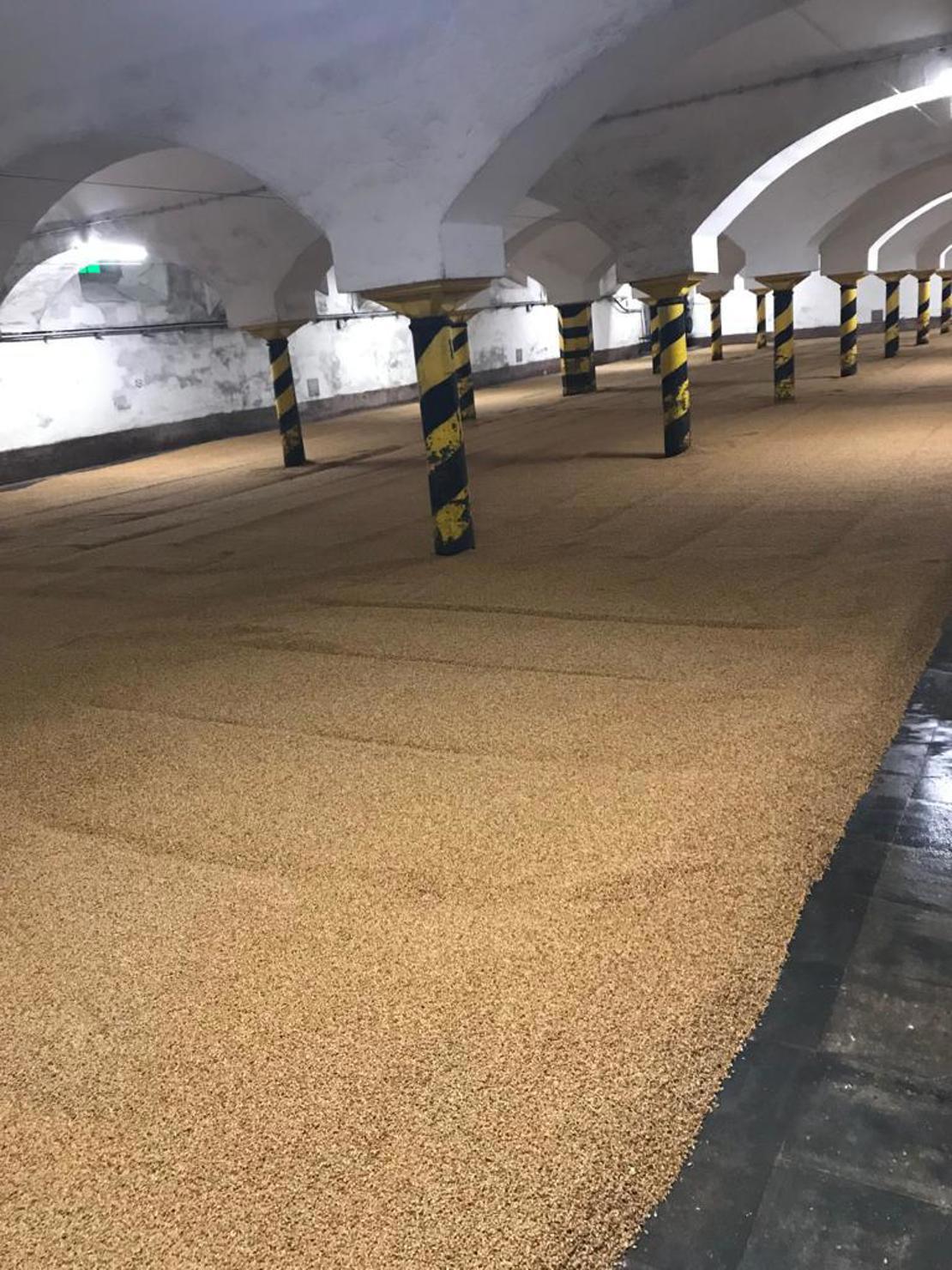Floor malting
Before the Industrial Revolution, the traditional method of producing malt for brewing was called floor malting. This process was mainly done by hand and is now considered a niche artisanal practice. However, a few specialty maltsters in the UK, Germany, and the Czech Republic still produce floor malts, which are highly valued by brewers for their deep, rich flavors.
The process of floor malting is similar to modern mechanized malting. The incoming grain is first steeped in large vats in alternating "wet" and "dry" cycles. After proper hydration, the malt is spread evenly by hand into an approximately 15 cm (6 inch) thick layer on a "floor" instead of a germination chamber. European floor maltings prefer to use tiles quarried only in the Bavarian village of Solnhofen, which is hard and thin with excellent thermal dispersion, moisture retention, and wear resistance. British floor maltings have retained their own types of stone floors.

Ferdinand floor malting facility.
Picture credit: Weyermann.de
While on the floor, the germinating grain must be turned by hand twice a day, seven days a week, using wooden malt shovels and an iron-wrought rake called a "malt rake" or "puller" in the UK, or "wohlgemut" in Germany, meaning "pleasant disposition." This is done to keep the grain properly oxygenated, to dissipate heat, and to prevent rootlets from tangling the malt into an unmanageable mat.
When the acrospires have grown almost as long as the barley kernels, the moist, green malt is sent to a kiln, where it is spread by shovels in a one-half meter (not more than two feet) thick layer. The drying process then proceeds slowly, for 32 to 48 hours, unlike the 24-hour process in industrial malting. The temperature in an old-style kiln with floor malt rarely exceeds 85°C (185°F).
Traditional floor malting does not use any artificial ventilation, which is why green floor malt beds contain more CO2 than modern plants. This process leaves the malt slightly "under-modified" by modern standards, but it gives the malt a rich, aromatic flavor that is more intense than that achieved by today's time-efficient, industrial malting procedures.
However, traditional floor malting is not possible during the summer because barley germinates unevenly when the ambient temperature rises above 14°C (57°F). This uneven germination would cause the malt to lose its pleasant flavor as well as its favorable processing qualities in the mash. In contrast, modern malting plants with mechanized controls can operate year-round.
Breweries producing and using Floor Malt
Floor malting has seen a decline in popularity over the years due to the advent of more modern, mechanized techniques. However, in countries with a rich brewing history, such as Germany and the Czech Republic, certain breweries still champion this time-honored tradition.
- Lindenbräu (Gräfenberg): Part of Linedenbraü's uniqueness stems from its utilization of self-produced floor malts, a method that owner and brewer Ralf Stockum undertakes as a personal pastime though it is a laborious and time-intensive process - LINDENBRÄU (GRÄFENBERG)
- Augustiner Bräu: The Munich based brewery still utilizes its historic Tennenmälzerei (floor malting facility). Every 8th hour they turn their malt on their special limestone floor in large rooms - 40 meters long and ten meters wide.
- Ferdinand: Not only do they produce their own floor malt, they are also the source for German malster Weyermanns floor malts.
- Malt Coast Brewery
While floor malting is less common in today's age of technological advancements in brewing, it remains an essential practice for select breweries that prioritize tradition and particular flavor profiles. In countries with a rich brewing history, like Germany and the Czech Republic, it's heartening to see that such age-old techniques are still alive and cherished. Whether you're a beer enthusiast or a casual drinker, tasting a beer made with floor-malted barley is a sip of history.
Sources
John Mallett: A Practical Guide from Field to Brewhouse. 2014
Horst Dornbusch: Brewing with the Living Past: Floor-Malted Heirloom Barleys for Ales and Lagers. 2010
Dennis Briggs: Malts and malting. 1997.
Augustiner Bräu: www.augustiner-braeu.de
I enjoyed your article -- very informative!
Thanks, I'm glad you enjoyed it.